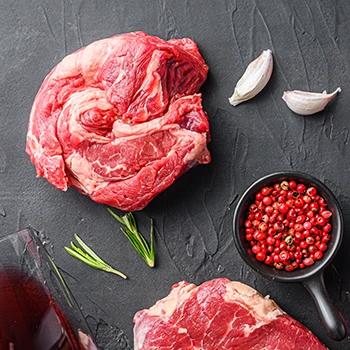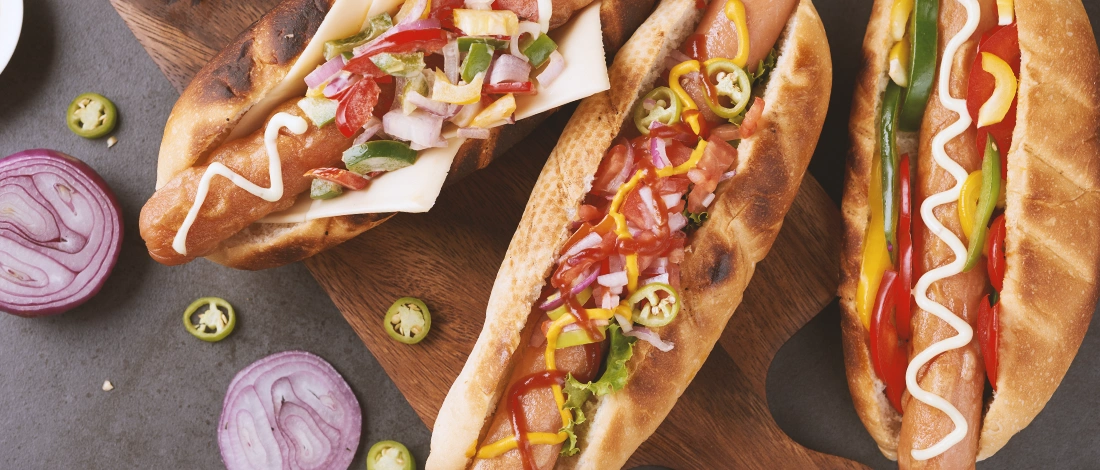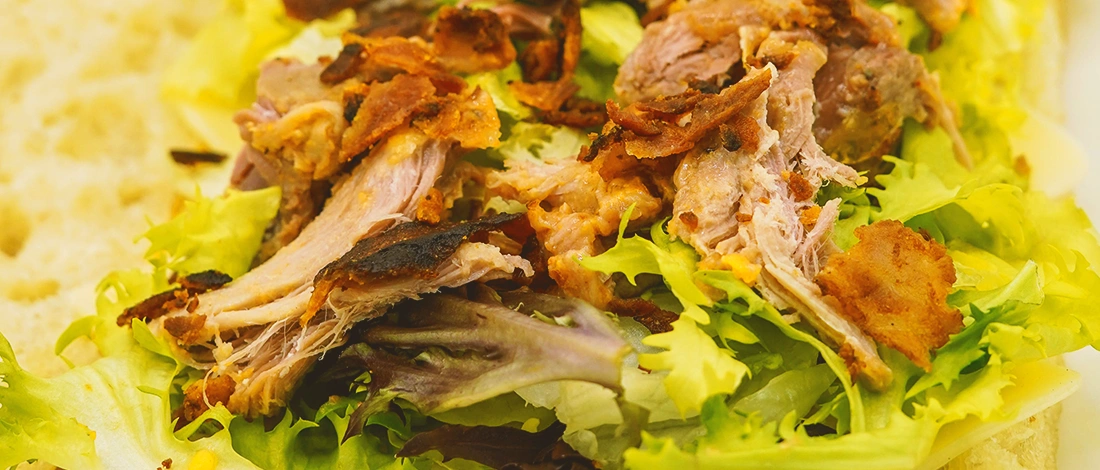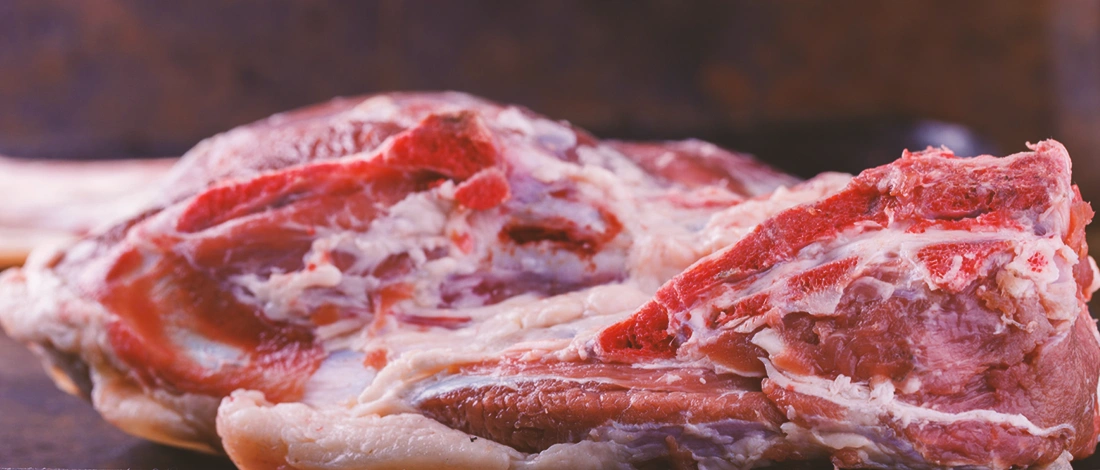I’ve been a carnivore lifestyle devotee for a decade, and I’ve cooked countless stews over this time.
It hasn’t always been easy because I had to pick up all the ins and outs of meat tenderization depending on the kind of meat I was handling.
This pursuit led me to consult with fellow chefs, explore diverse cuisines, and devote countless hours to finding the most efficient and effective ways to tenderize stew meat.
Today, I’ll share my tips and tricks on making a tender stew meat so that you can achieve juicy results in no time.
Quick Summary
- To tenderize stew meat, you can braise it slowly with low heat, marinate it with acidic ingredients, sear it before cooking, or pound it for larger cuts.
- Avoid common mistakes like skipping marination, overcooking, or using the wrong meat cuts for stew.
- Ideal cuts for stew include chuck, round, brisket, and others with collagen for a tender result.
4 Best Ways to Tenderize Stew Meat
Make sure to buy quality cuts, no matter which tenderizing option you choose. We’ve tried countless meat deliveries and come up with the 11 best meat delivery services.
These are the four best ways to tenderize stew meat.
1. Braise

Braising is a great meat tenderizer. This is a slow cooking method in a little water. The temperature should be low enough so the collagen in the meat breaks down but high enough to kill any microorganisms.
You can braise the meat on a stovetop or an oven. If you decide to braise the meat on a stovetop, you should sear or brown it first to avoid the meat having a gray look.
Cook the meat on the stovetop for two hours at 180 to 190 degrees.
If you braise the stew meat in the oven, preheat the oven to 300 degrees. Put the meat in one layer in a roasting pan with a lid.
Season as desired, and add half a cup of water or beef broth to the pan. Put the lid on, and cook stew meat for two hours.
Tip: Check if there’s enough liquid every half hour, and add more if needed. There should always be liquid in the bottom of the pan.
Overall, this is a slow cooking process, no matter if you opt for braising in the oven or stovetop.
The meat needs time for the collagen to melt, so you have tender meat.
2. Marinade
The marinade is another way to get tender beef chunks. You should use a marinade with an acid content, for example, vinegar, lemon, lime, yogurt, wine, buttermilk, or tomato juice.
Acid breaks down the collagen in the meat fibers and makes the tough meat tender.
After marinating, you can cook the beef stew with any method you prefer. However, keep in mind too much marinade in a slow-cooking stew will take longer to tenderize meat.
For example, use wine to deglaze, but wait to add lemon, lime, or tomato juice, towards the end of the cooking process.
“Marinade the meat in a Worcestershire sauce if you plan to sear. Another option is red wine because red wine breaks down connective tissues. Be careful with vinaigrettes as they cook the food on the outside a little and give it a gray color that we don’t like.”
- Cooking Guide, YouTube Channel
If you have more time, marinate stew meat overnight. Acids take time to penetrate the meat; the process will take longer if you add oils or sugar. Marinating overnight is especially good if you have a thick cut of meat.
Meat cuts that should be marinated include chuck meat, skirt, sirloin, round, and flank.
Read More: How to Marinate Meat?
3. Sear

You can also sear raw meat in a tablespoon of oil on medium-high heat. Use a heavy skillet, and sear until the beef becomes brown on all sides.
Your meat should have a dark brown crust and a glaze over the bottom of the pan.
Tip: Don’t put too much meat in the pot when searing. It should be hot enough to avoid stewing the meat when searing. Stick to a single layer of meat, and sear in small batches.
Cook meat for about two hours in a Dutch oven on a low simmer after searing.
4. Pound the Meat
The final way to make the stew meat tender is to use a meat mallet. Pounding the meat breaks down the connective tissues, so the fibers can’t make the meat chewy.
Note: Pounding is a good way to tenderize larger meat cuts. If you have traditional cube-shaped meat for stew, skip this step and use a marinade or braising method.
If you aren’t sure what’s the correct serving size, the USDA states you should have a third of a pound for a rib eye and sirloin tip roast per person [1].
Additional Tips for Tenderizing Stew Meat

In addition to the primary methods of marinating and braising stew meat, some quick tips and tricks can significantly impact the tenderness of your stew meat.
1. Deglazing for Flavorful Juices
After searing the stew meat, remember to deglaze the pan. This involves adding a liquid (such as wine, broth, or even water) to the hot pan and scraping up all the flavorful bits stuck to the bottom.
These concentrated juices will infuse your stew with an extra depth of flavor.
2. Resting for Juiciness
Once your stew is ready, allow it to rest for a short period before serving. Resting the stew meat allows the juices to redistribute throughout the meat, ensuring that each bite is succulent and moist.
A quick five to ten-minute rest can make a world of difference in the tenderness of your meat.
COMMON MISTAKES TO AVOID

While tenderizing stew meat, it's important to steer clear of some common pitfalls:
1. Skipping the Marinating Step
Marinating stew meat is a key process for tenderizing. The acids and enzymes in marinades help break down tough fibers, to make a tender meat stew.
Take your time with this step; give the meat ample time to soak up those flavorful marinade components.
2. Overcooking
One of the most significant mistakes is overcooking the stew meat. It can become tough and dry if you cook the meat for too long at high temperatures.
Instead, simmer it gently at a low temperature to allow the collagen in the meat to slowly break down and turn into gelatin, which results in a wonderfully tender stew.
3. Using the Wrong Cut
Not all marinated stew meat is created equal. Some cuts, like chuck or brisket, are naturally suited for stewing because of their high collagen content. Using lean cuts can lead to chewy, less tender meat. Always choose a cut known for its tenderness in stews.
Which Meat to Use for Stew?

You should use tough cuts of meat for stew. Chuck and round are most commonly used for boiled beef stew. These are also among the most affordable options.
In theory, you can use any kind of beef for stew. But tougher cuts of meat result in a tender stew. These cuts have more collagen and marbling, meaning more fat in the connective tissue.
When you cook the beef cubes in a Dutch oven or a slow cooker, the connective tissue breaks down, and collagen transforms into gelatin, which results in tender and juicy beef stew meat.
Pro tip: Get the meat from hardworking muscles on the cow, such as the leg, for the most tender results.
Cuts of meat best used for a stew are:
- Chuck
- Bottom round roasts
- Brisket
- Flank steak
- Hanger steak
- Shoulder roast
- Beef chuck roast
- Short ribs
Also Read: Hamburger Stew Recipe
Egyptian Okra Stew Recipe
- Prep Time: 10 Minutes
- Cooking Time: 35 Minutes
- Total Time: 45 Minutes
- Servings: 6
Ingredients
For The Lamb
- 1 - pound lamb
- 2 pieces of mastic
- ¼ cup cilantro (chopped)
- 1 small onion (finely chopped)
- ¼ tsp cinnamon
- 1 tsp 7-spice blend
- 2 cloves of garlic
- 2 tsp black pepper
- 2 bay leaves
- ¼ tsp ground cardamom
- 1 celery stick (cut into medium-sized chunks)
- 1 small carrot (cut into medium-sized chunks)
For the Okra Stew
- 1 tsp salt
- 1 medium onion (diced)
- 4 tbsp tomato paste
- ½ tsp black pepper
- 3 tbsp olive oil
- ½ tbsp freshly ground coriander
- 5 cloves of garlic (minced)
- 2 tbsp fresh cilantro (chopped)
- 1 tin (14oz) tomato sauce (passata)
- 1 14oz bag of frozen baby okra
- 2 cups (500ml) lamb or beef broth
- 2 jalapeno peppers (or bell peppers if you don’t like spicy food)
Instructions
- In a deep, large pot, bring four liters of water to a boil over high heat.
- Add the pieces of lamb to the water and allow it to come to a boil again. Allow the lamb to boil rapidly for about 3 to 4 minutes.
- Spoon all the meat out using a slotted spoon. Throw out the water.
- Add a bit of water into the same pan together with the onion and mastic and bring to a boil.
- Add the lamb to the onion and mastic mixture and the remainder of the ingredients (spices, vegetables, and herbs).
- Bring the lot to a boil, reduce the heat and allow it to simmer for a further 20 minutes or until it is done.
- Heat the olive oil in a deep, large pot over medium heat.
- Add the coriander, garlic, and onion, and sauté for 2 to 3 minutes or until fragrant.
- Add the chopped cilantro and stir gently for 30 seconds or until fragrant.
- Add the jalapeno or bell peppers and stir for another minute or so.
- Mix in the tomato paste and the okra, followed by the broth and the tomato sauce.
- Add the pepper and salt and bring the mixture to a gentle boil.
- Reduce the heat, cover the pot with a lid, and allow it to simmer for about 20 minutes.
- Finally, add the cooked lamb to the okra mixture and allow it to simmer for another 10 minutes or until the okra is tender.
FAQs
How Do You Make Beef Stew Soft and Tender?
You make beef stew soft and tender with a low and slow cooking process. Stew meat is tough and needs time to break down, so you should cook it slowly without rushing the process.
How Do You Tenderize Tough Stew Meat?
You tenderize tough stew meat by braising, marinading, searing, or pounding the meat.
Does Boiling Stew Meat Make it Tender?
Boiling stew meat makes it tender. Boiling will result in firm meat that doesn’t fall apart but it’s tender. This is a great cooking method if you want juicy and not shredded meat in your stew.
References:
- https://naldc.nal.usda.gov/download/CAT87214682/PDF







